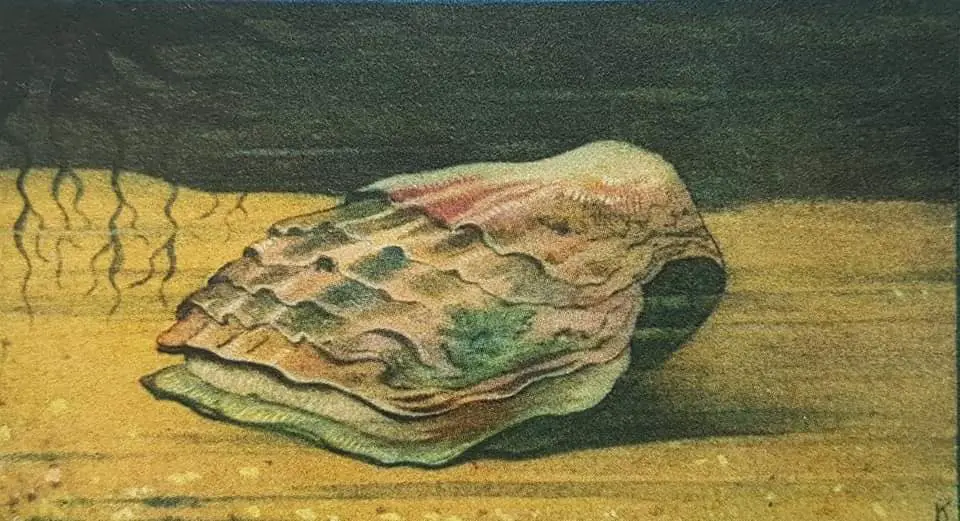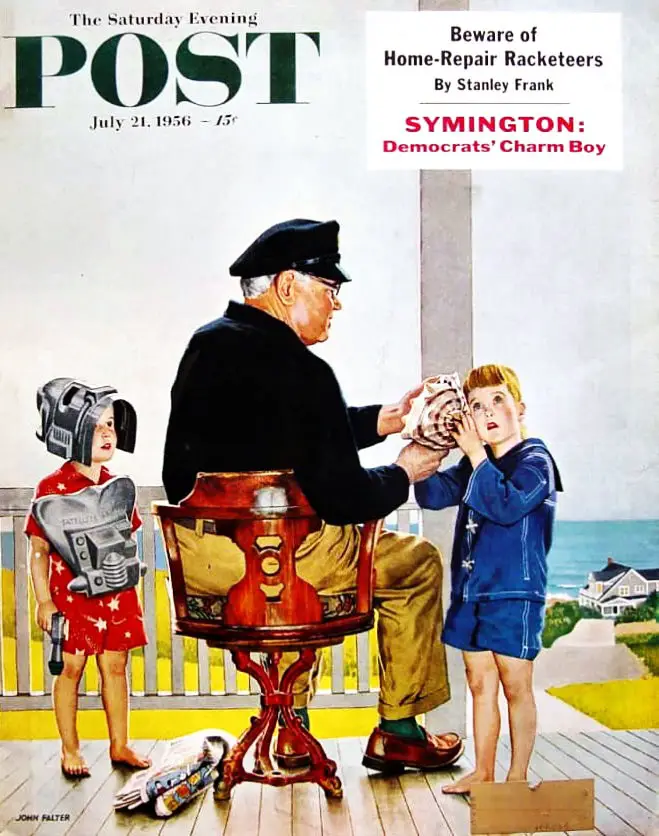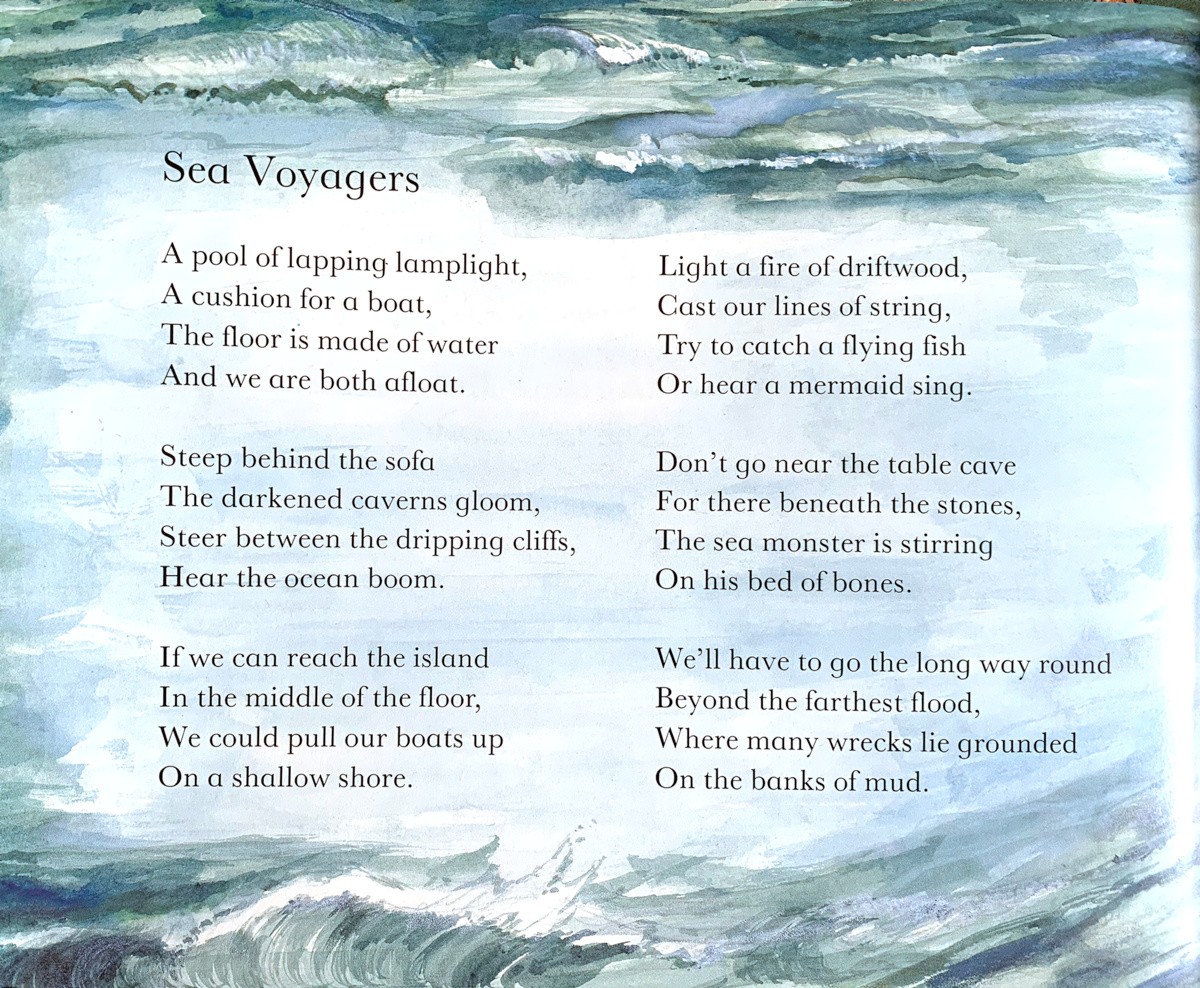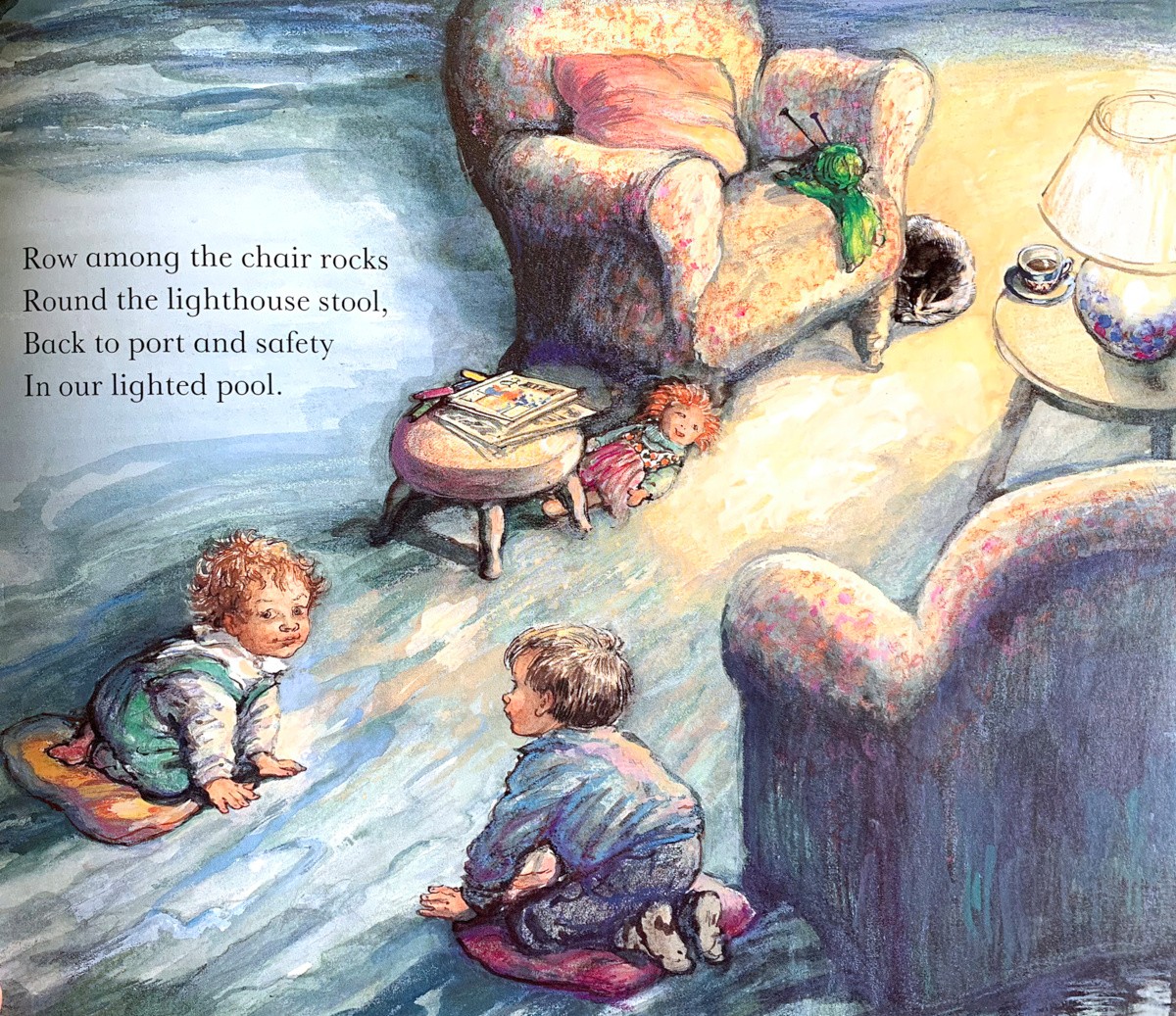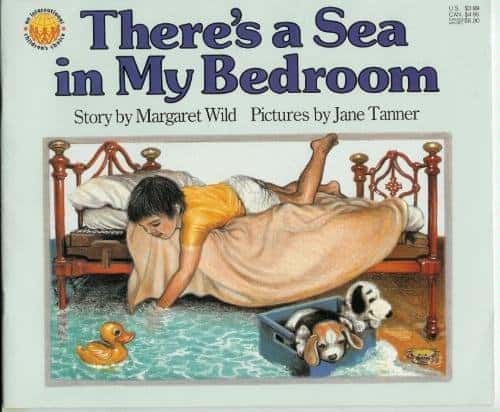There’s A Sea In My Bedroom (1984) is a classic Australian picture book, written by Margaret Wild and illustrated in realistic fantasy style by Jane Tanner.
Margaret Wild is a well-known Australian author whose subject material ranches from melancholic to funny. I have previously blogged about Harry and Hopper and Chatterbox. Jane Tanner is also a well-known Australian illustrator, and also a writer and editor.
SETTING OF THERE’S A SEA IN MY BEDROOM
When the sea/ocean is used in narrative, it’s worth making a clear distinction between the surface and the depths, because these are two very different arenas.
There’s A Sea In My Bedroom sticks firmly to the ocean surface. Wait until* David gets seaweed — or worse — tangled around his ankles, and steps on a blue bottle. Then he might get a bit suspicious about what the sea really is all about… but best to stick to paddling for now.
*David probably turned 40 this year, if he was six in the pictures.
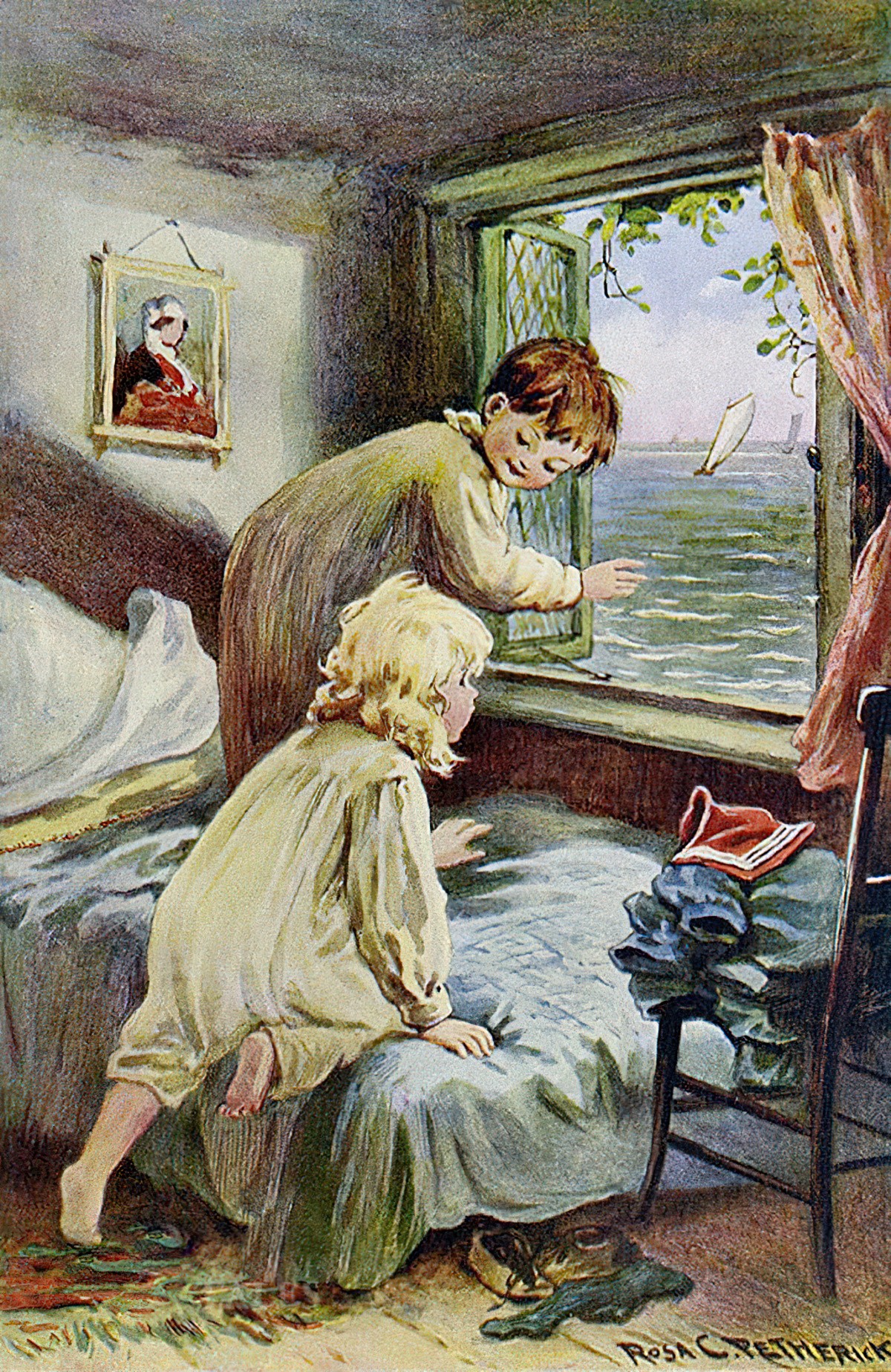
STORY STRUCTURE OF THERE’S A SEA IN MY BEDROOM
SHORTCOMING
David was frightened of the sea.
It’s right there in the opening sentence. Some advocate ‘showing not telling’ but in a picture book for very young readers, you often get both. First we’re told, then we’re shown. The image of the rough sea — and nothing else — is really quite scary actually.
Because this is a picture book, and you’ll have read plenty of picture books if you’re here at this blog, you will know from the very first line that this is a story about overcoming one’s fear of the sea.
Deeper than that, children have a hard time with that time of the day between being sent to bed (on their own) and falling asleep. This is one of those books about that particularly magical time of day.
DESIRE
An aversion to the sea is not in itself a desire, so Margaret Wild is sure to put something in that he’d rather be doing instead. David loves to collect shells, and he is quite happy doing this.
Tip for picture book authors: If your main character is afraid of something, give them a proxy desire, not directly related to the aversion. This will help the reader to feel like this is a complete and rounded story. But it does more than that: It lets us know that this is not a wholly pathetic character.
OPPONENT
You could argue that the father is David’s opponent. Dad gives David the conch shell and tells him — cruelly! — that the sea can be heard inside the shell. David then takes the shell home, and his greatest fear is inside his bedroom now.
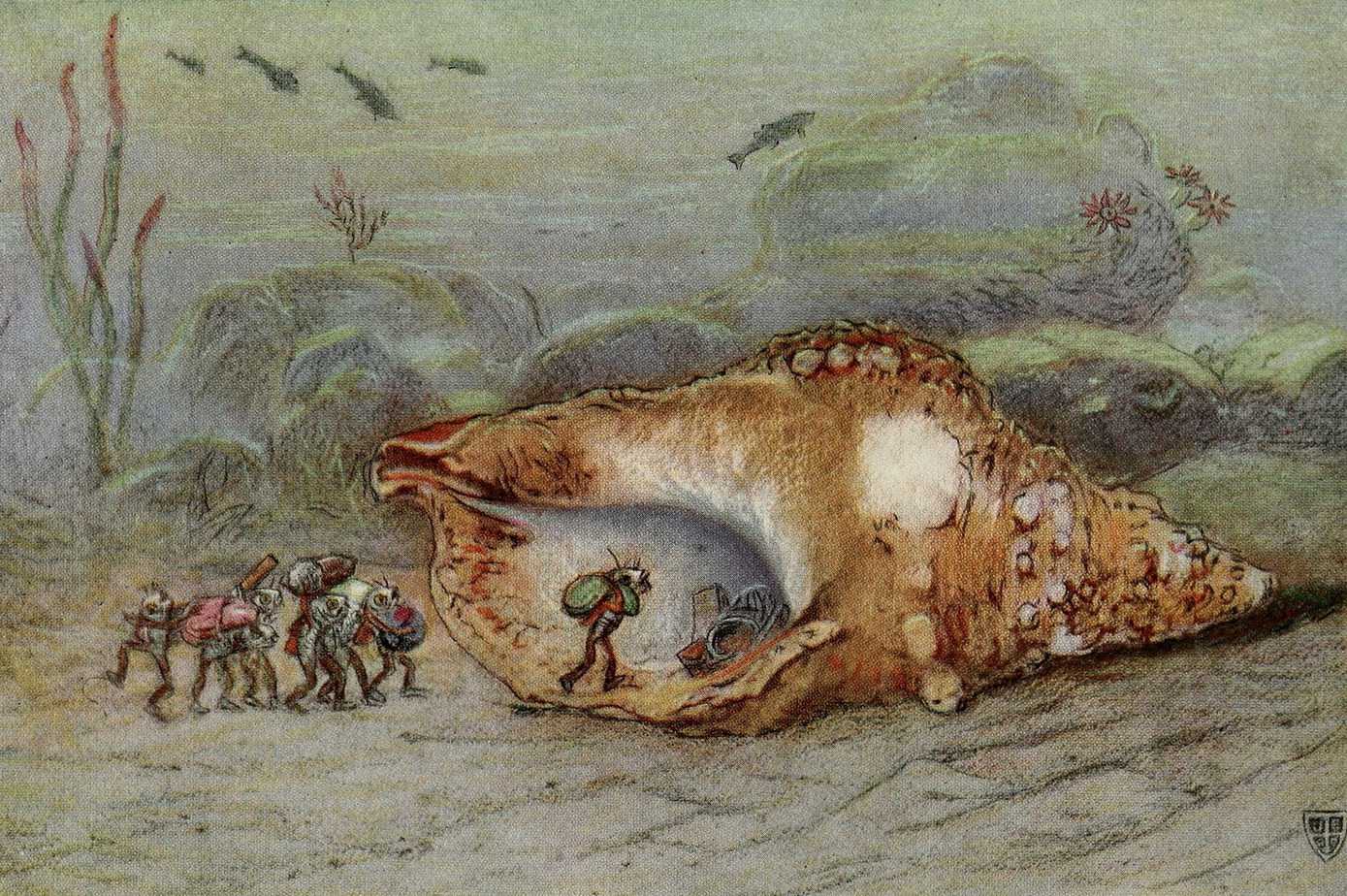
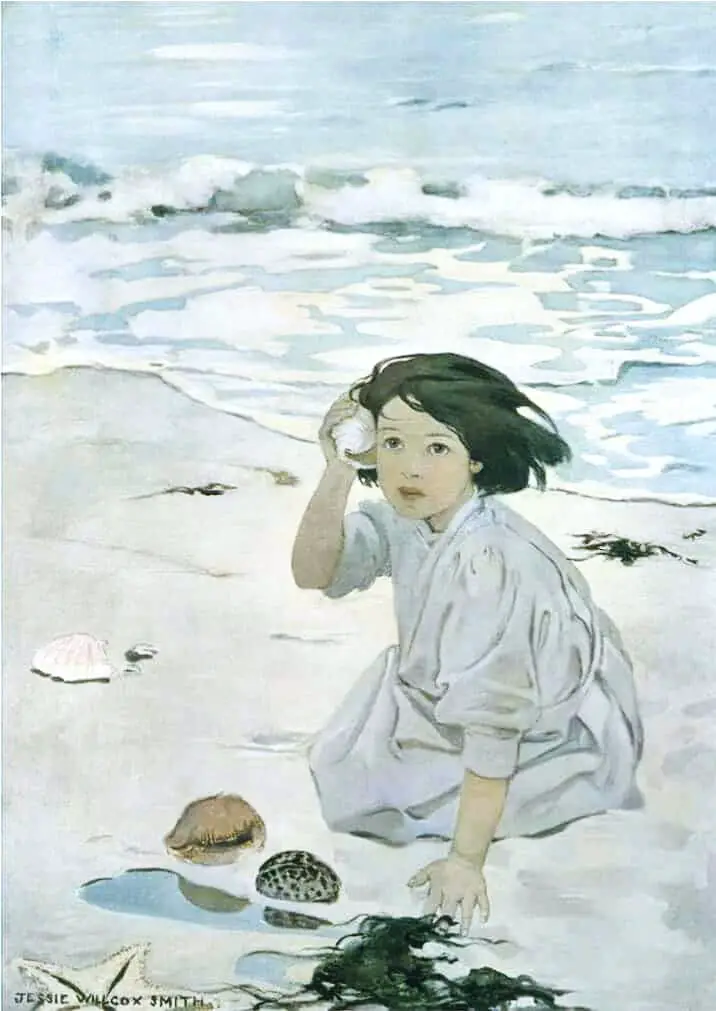
PLAN
At home in his room, alone with the ‘magical’ shell, David goes on a carnivalesque adventure into a sea which invades his bedroom and fills it up. But this is not a scary situation, this is fun.
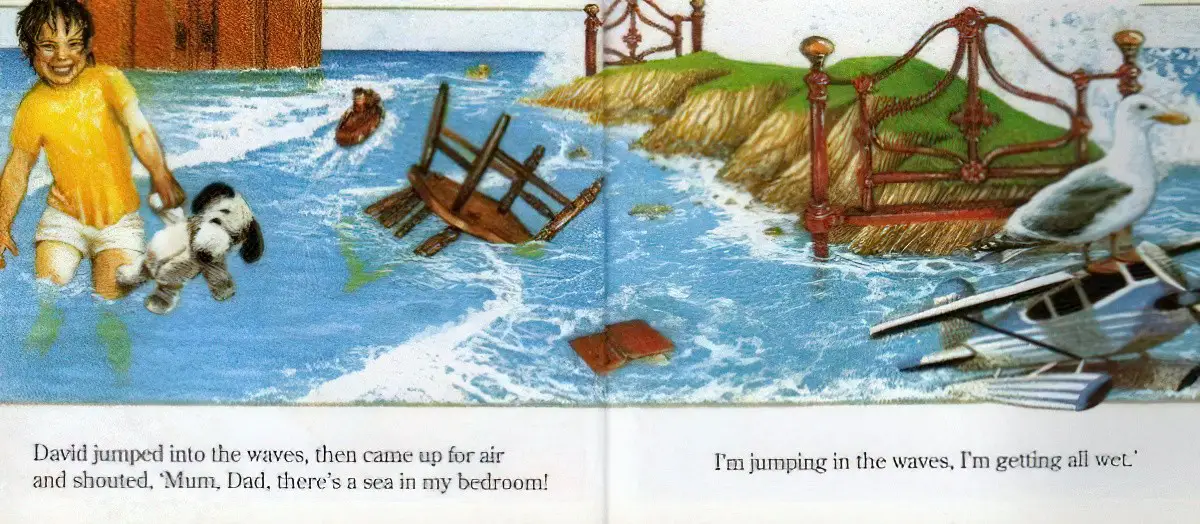
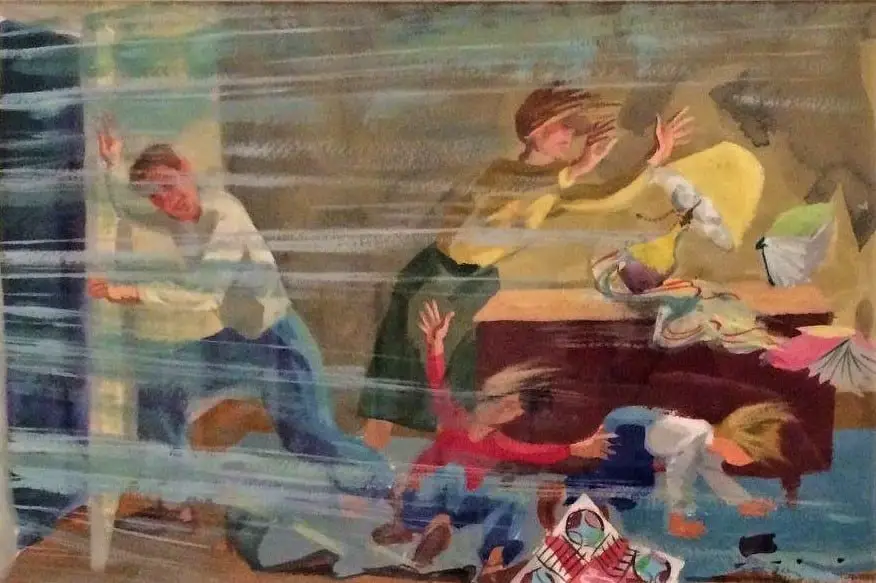
BIG STRUGGLE
The proxy for the Battle scene is when his parents come in to find him writhing around on the carpet, in some sort of imaginary play. I suspect the young reader might expect a telling-off, because presumably David is meant to be in bed trying to get some sleep.
ANAGNORISIS
A soft growly, friendly sea.
When David explains to his parents that the imaginary sea was friendly, he can transfer that positive emotion to the real sea.
NEW SITUATION
Now David is able to enjoy swimming at the beach as well as collecting shells. He has learned that the sea is friendly.
(I’d argue that the sea is not particularly friendly in Australia, but that message is not helpful in a picture book.)
COMPARE AND CONTRAST
Where The Wild Things Are is the archetypal picture book about a boy who goes on an imaginary adventure at sea, though this one starts at the beach and ends there, too. And There’s A Sea In My Bedroom is designed to help children overcome a very specific fear, whereas Wild Things is more a mood piece about bad feelings in general. We don’t even know what it is exactly that leaves Max in such a bad mood.
Theodore Mouse Goes to Sea and The Sailor Dog are Little Golden Books about sea adventures — one a parody, the other written straight.
The Polar Express also makes use of the trope in which a child returns from an imaginary (not imaginary) adventure to find evidence of the trip in the form of something material. I’m not a fan of this trope, because I feel intuitively that it encourages magical thinking. (There’s a line between enjoying magical fiction and actively discouraging reason.) In There’s A Sea In My Bedroom, the talisman is a small pile of sand, which works really well for a reader like me, because the sand probably came out of the shell, or his shoe or wherever. There’s absolutely a real setting reason for a pile of sand to be in his bedroom. A young reader can be helped to understand that, too, unlike in The Polar Express.
